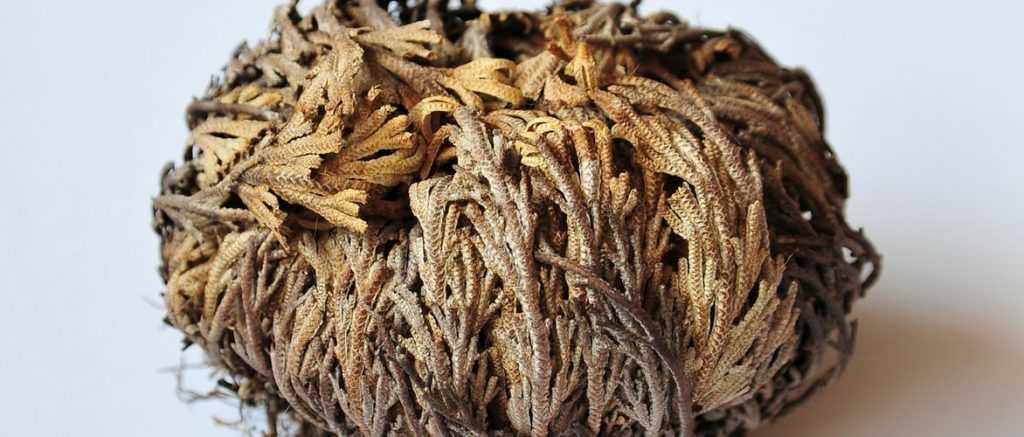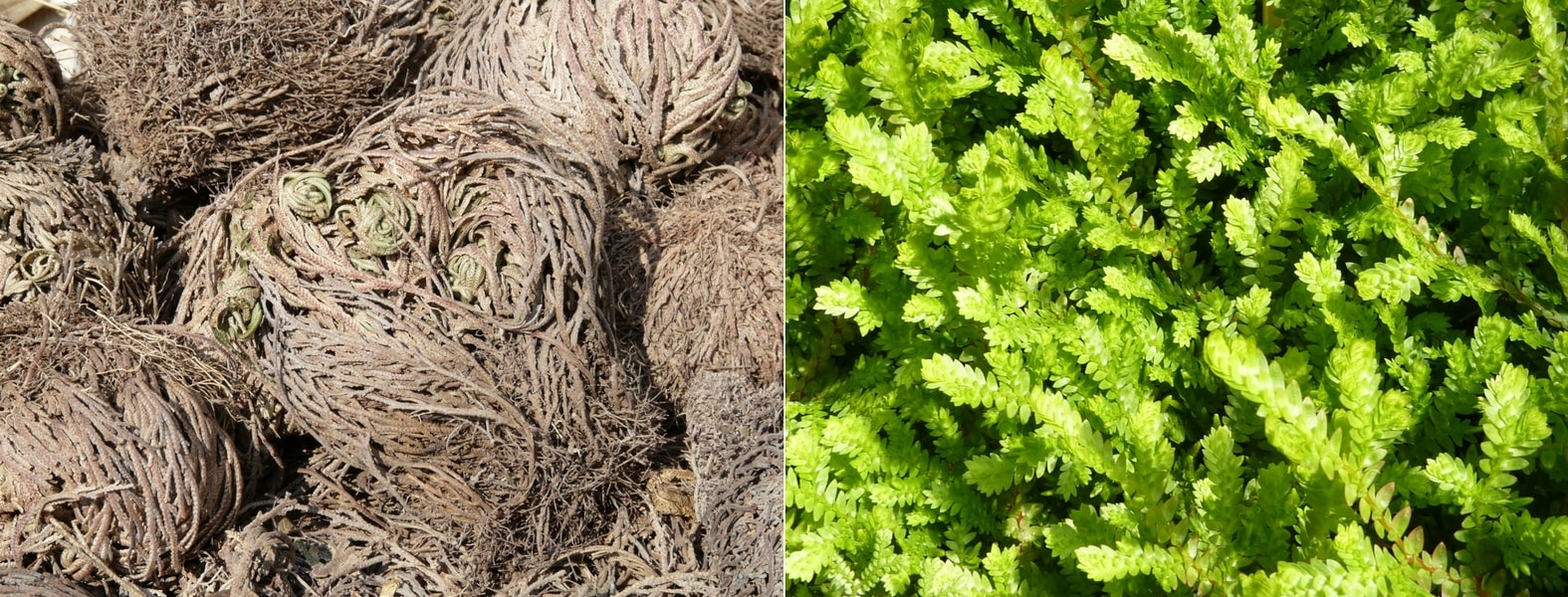
Planting and Growing the Rose of Jericho
to witness its resurrection!
Contents
The Rose of Jericho, Selaginella lepidophylla, is a fascinating little plant that has developed a remarkable strategy to withstand drought. When dry, it enters dormancy: it curls up into a tight ball and appears lifeless. Yet, upon rehydration, it unfurls completely and regains its vibrant colours, much like a flower blooming anew! This ability to seemingly die and then spring back to life with water has earned it the names “Resurrection Plant” or Rock Flower.
It grows naturally in the Chihuahuan Desert, straddling the border between Mexico and the United States, which explains its extraordinary drought adaptation.
The Rose of Jericho is closely related to ferns! As such, it produces neither flowers nor seeds, but spores. It forms a flattened rosette with branching stems radiating outward from the centre. Instead of true leaves, it bears tiny, scale-like structures.
Where to plant the Rose of Jericho?
The Rose of Jericho is a frost-tender plant that needs protection from the cold! You can grow it in a greenhouse, conservatory, or in a frost-free and bright room, sheltered from direct sunlight.
How to Grow a Rose of Jericho?
You can rehydrate your Rose of Jericho as follows:
- Simply place your dried plant on a saucer filled with soft water (or low in lime). Within minutes, it will come back to life and begin to flourish. Leave it in the saucer for a few days.
- You can then keep it flourishing by placing it, for example, in a terrarium to maintain a high humidity level, or give it a resting period, which can last from one to several months, without water. Do not expose it to direct sunlight.
To preserve it longer, place it in a pot:
- Prepare a suitable substrate, very well-draining, acidic and light, by mixing heather soil, sand and pumice. Choose a shallow pot, then fill it with substrate and place the plant.
- Place it in a bright location, without direct sunlight, preferably at a temperature between 20 and 25 °C. It dislikes very cold temperatures, below 5 °C.
Avoid excess water at all costs, as it could cause rotting. Give it a dormant period of a few months, during which you let it dry out.

The Rose of Jericho or Selaginella lepidophylla: before and after rehydration
Did you know?
Did you know that another plant bears the name “Rose of Jericho”? It is Anastatica hierochuntica, a small plant from the Brassicaceae family, native to North Africa, which also has the ability to dry out and curl up during drought, then unfurl when moistened.
- Subscribe!
- Contents

































